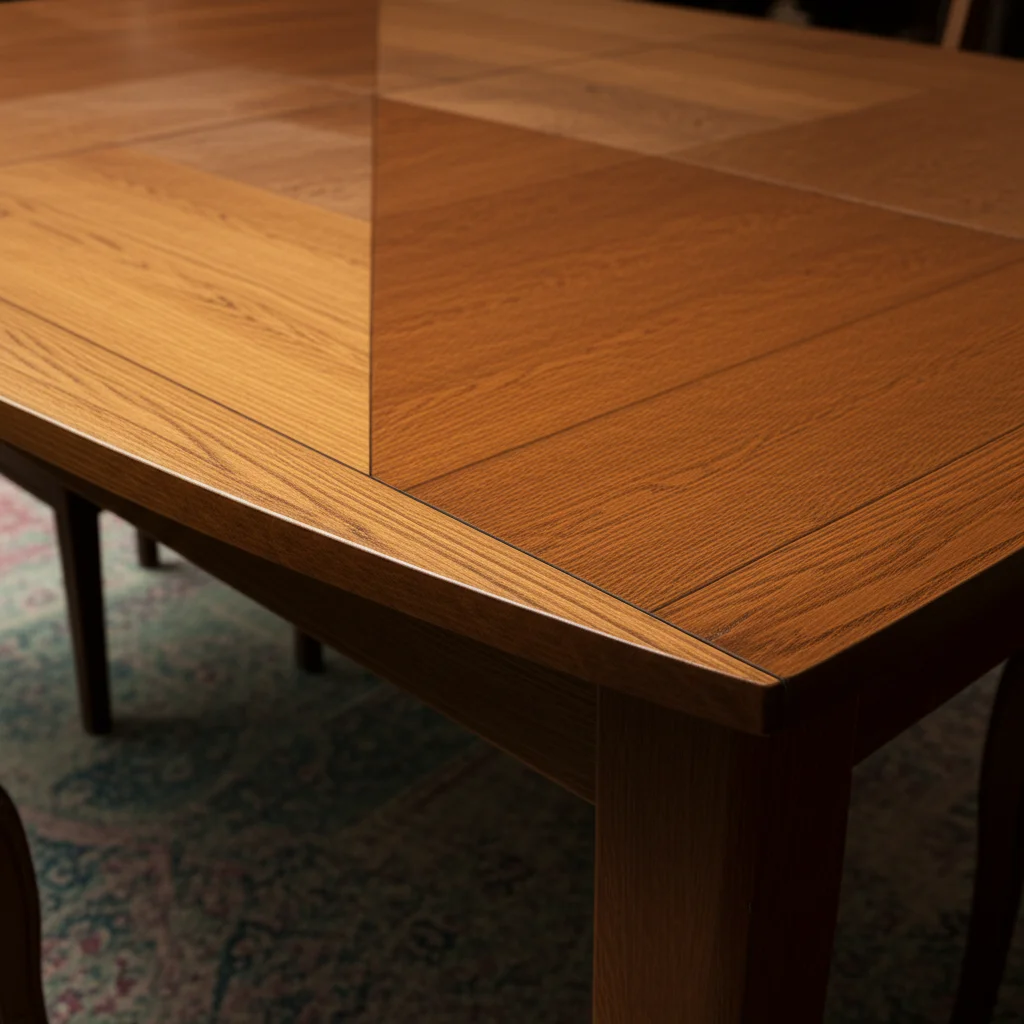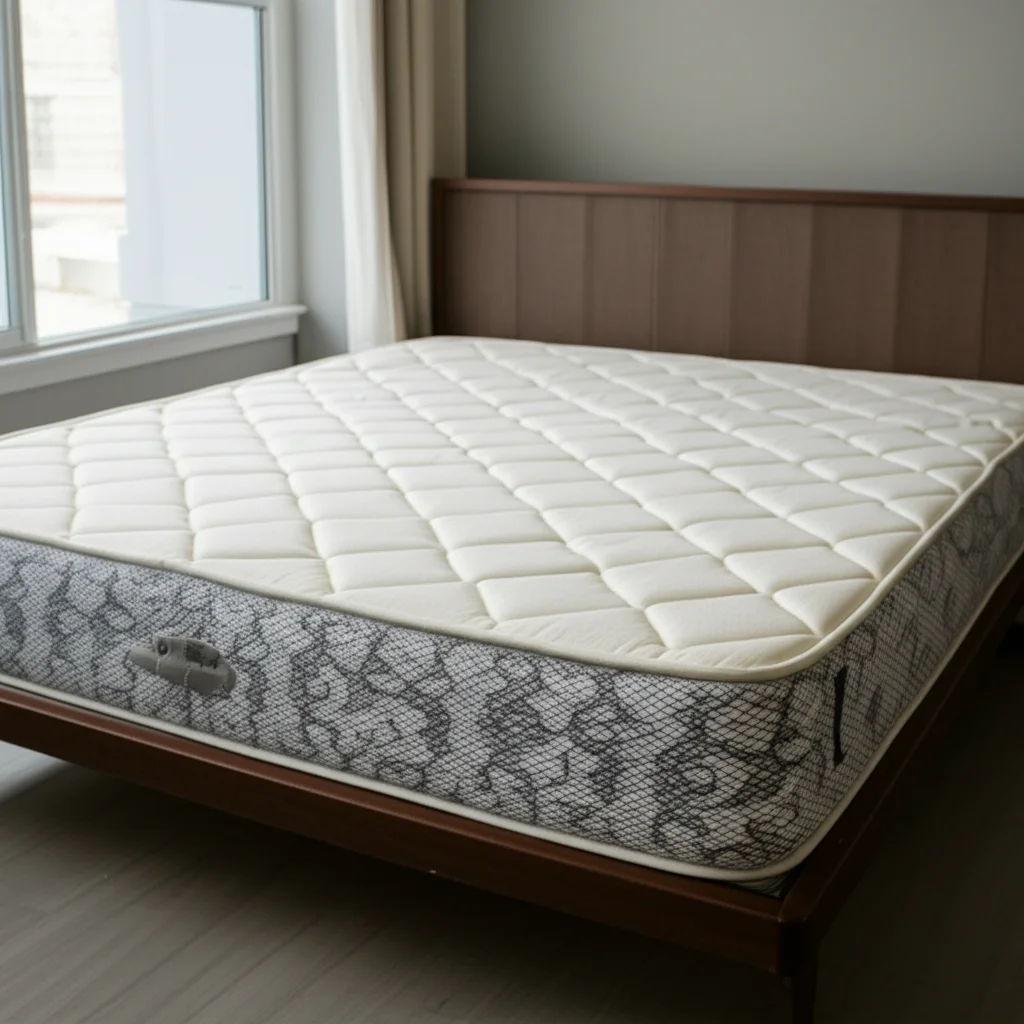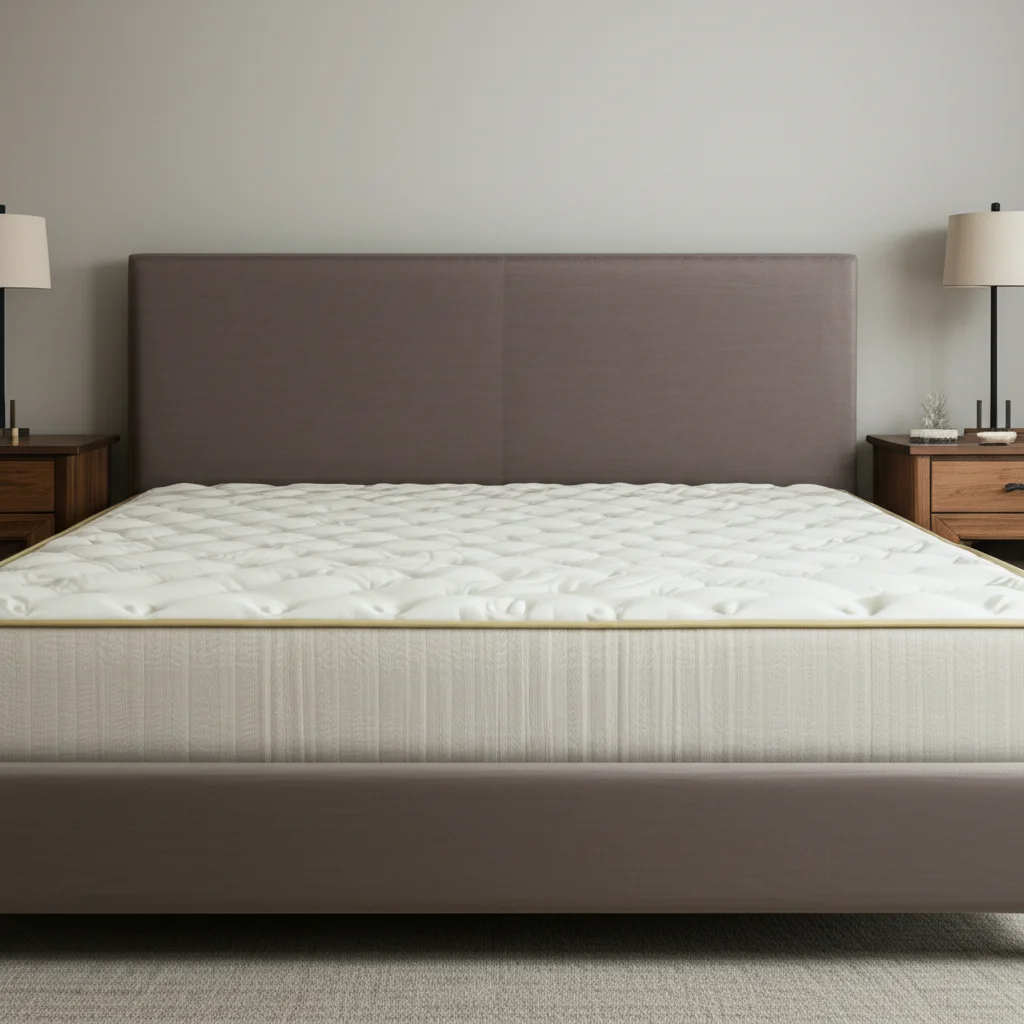· Todd Martin · Home Organization · 18 min read
How To Store A Table Leaf

Masterful Ways to Store Your Table Leaf Safely
A dining table with removable leaves offers wonderful flexibility. You can expand it for large gatherings and shrink it for everyday use. But what do you do with those extra table leaves when they are not in use? Learning how to store a table leaf correctly is essential. Proper storage protects your leaf from damage, warping, and discoloration. It ensures your table looks great every time you expand it. This guide covers everything you need to know for successful table leaf storage, keeping your furniture in top condition for years.
Takeaway:
- Store table leaves flat or vertically, not leaning at an angle.
- Control temperature and humidity to prevent warping.
- Clean and protect leaves with appropriate covers before storage.
- Consider under-table storage or custom solutions for convenience.
Clear Answer:
To store a table leaf, ensure it is clean and dry. Wrap it in a breathable, protective material like a padded furniture blanket or acid-free paper. Store the leaf flat on a stable surface or vertically in a secure, padded rack. Keep it in a climate-controlled area, away from direct sunlight, extreme temperatures, and high humidity, to prevent warping and damage.
Understanding Table Leaf Storage Needs
Your dining table leaf is more than just a piece of wood. It is a vital extension of your furniture. Proper storage prevents common issues like warping, cracking, or color changes. These problems often happen due to improper environmental conditions or physical damage. Wood is a natural material. It reacts to changes in temperature and humidity. When wood gains or loses moisture unevenly, it can warp or crack. This makes the leaf fit poorly or not at all. You want your leaf to match your table seamlessly every time you use it.
Protecting your table leaf also means protecting its finish. Scratches, dents, and dings can happen if the leaf is stored carelessly. A damaged leaf diminishes the overall appearance of your dining table. Furthermore, a well-cared-for table leaf will last longer. This saves you money in repair or replacement costs. Taking a few extra steps now ensures your table leaf remains a functional and beautiful part of your home for many years.
Consider the material of your table leaf. Solid wood leaves are most susceptible to humidity changes. Veneered leaves also need care, as their thin wood layers can delaminate if not stored correctly. Glass or metal leaves have different needs. They require protection from breakage or scratches. Understanding these material properties helps you choose the best storage method. Your goal is to create a stable, protected environment for your leaf.
Preparing Your Table Leaf for Storage
Preparing your table leaf for storage involves a few simple steps. This preparation ensures the leaf stays in excellent condition. First, clean the table leaf thoroughly. Use a soft, damp cloth to wipe away any dust, food spills, or fingerprints. If your table is wood, you might use a wood cleaner specifically designed for furniture. Ensure the cleaner does not leave a residue. After cleaning, dry the leaf completely. Any lingering moisture can cause mold or mildew growth during storage. A soft, dry cloth works well for this step. For tips on general table care, you can read how to clean a wood table.
Next, consider applying a protective finish. For wood leaves, a furniture polish or wax can add an extra layer of defense against moisture. This also helps maintain the wood’s luster. Apply a thin, even coat. Allow it to dry fully before proceeding. This step is like adding a shield to your table leaf. It guards against environmental factors during storage. For detailed guidance on cleaning, look at how to clean a wood dining table.
Finally, protect the leaf from physical damage. Wrap the table leaf in a soft, breathable material. Padded furniture blankets are excellent choices. They provide cushioning and allow air circulation. Acid-free packing paper or old clean bedsheets also work well. Avoid plastic wraps or tarps. These can trap moisture, which leads to mildew or warping. Plastic also prevents the wood from breathing. This causes condensation, which damages the finish over time. Secure the wrapping gently with tape or string. Make sure the corners and edges are especially well-padded. This protection prevents scratches and dings when moving or storing the leaf.
Vertical vs. Horizontal Storage Solutions
Deciding between vertical and horizontal storage for your table leaf depends on several factors. Each method has its pros and cons regarding space, protection, and stability.
Horizontal Storage: Flat and Stable
Storing a table leaf horizontally means laying it flat. This is often the best method for preventing warping. It evenly distributes the leaf’s weight, reducing stress on any one part.
- Benefits:
- Prevents Warping: Lying flat keeps the leaf’s shape true. This is especially important for solid wood leaves.
- Stable: The leaf is less likely to tip over or slide.
- Easy Access: You can stack multiple leaves if needed, though this requires careful padding between each.
- Considerations:
- Space: Horizontal storage requires a significant amount of flat surface area. This might be a large closet shelf, under a bed, or on top of a dresser.
- Support: Ensure the surface is completely flat and firm. Uneven surfaces can still lead to warping. Avoid storing it on top of soft items like blankets without a firm base.
If you choose horizontal storage, use a protective cover. A padded blanket or a custom-made bag works well. Place the leaf on a surface where it won’t be easily bumped or have other items piled on top. For instance, a dedicated space in a spare room or a large, sturdy shelf in a storage closet is good.
Vertical Storage: Space-Saving and Secure
Vertical storage involves standing the table leaf on its edge. This method saves floor space, making it popular for smaller homes or storage areas.
- Benefits:
- Space-Saving: Takes up less floor area. This is ideal for narrow spaces like a closet or against a wall.
- Accessibility: If stored in a custom rack, individual leaves can be easy to retrieve.
- Considerations:
- Support is Key: The leaf must stand perfectly upright. Leaning can cause bowing or warping over time. A specially designed rack or divider is highly recommended.
- Edge Protection: The bottom edge takes all the weight. Ensure it is protected and padded to prevent wear.
- Stability: The leaf must be secured to prevent tipping. This is a safety concern, especially if children or pets are in the area.
For vertical storage, consider building or buying a storage rack. Many dining tables come with a specific bag or rack for their leaves. If yours did not, you can create one. A simple DIY solution involves using strong, padded dividers to keep the leaf upright and secure. Always pad the contact points. This prevents scratches or pressure marks. If you have an expanding table, understanding its mechanism, like how does a butterfly leaf table work, can help you choose the best storage.
No matter which method you choose, the key is stability, protection, and proper environmental control. Avoid storing leaves directly on concrete floors. Concrete can draw moisture, leading to damage. Always elevate the leaf slightly if storing on the floor. You might use small wooden blocks or a pallet.
Under-Table and Built-in Storage Options
Many modern dining tables come with clever built-in storage solutions for their leaves. These options offer convenience and ensure the leaf stays close to its table. If your table has such a feature, use it. It is often the safest and most convenient place to keep your extra leaf.
Under-Table Storage Mechanisms
Some tables feature hidden compartments or runners designed to hold leaves directly underneath the tabletop. This is an ideal solution.
- Drawer-style storage: The leaf slides into a dedicated drawer or compartment. This keeps it flat and protected.
- Clip-in mechanisms: Leaves may clip directly to the underside of the table. They hang securely when not in use.
- Butterfly or self-storing leaves: These leaves fold and store themselves within the table frame. They are an integrated part of the table’s design, removing the need for external storage. Learning how to add a leaf to a table often involves interacting with these built-in systems.
These built-in options are designed to maintain the leaf’s condition. They usually keep the leaf in the same climate as the main table. This helps prevent warping. Always ensure the leaf is clean before sliding it into these compartments. This prevents dust accumulation inside the table.
Custom Storage Bags and Racks
If your table does not have built-in storage, many manufacturers offer custom storage bags or racks. These are designed to fit your specific table leaf size and shape.
- Padded storage bags: These are typically made of a heavy-duty, breathable fabric. They feature padding to protect the leaf from bumps and scratches. They often have handles for easy transport.
- Vertical storage racks: Some companies sell freestanding or wall-mounted racks. These hold leaves upright and separated. They are a good choice if you have multiple leaves or limited horizontal space.
When using a custom bag or rack, place it in a safe location. A corner of a closet, a utility room, or a dedicated storage area is suitable. Avoid high-traffic zones where the leaf might be accidentally knocked. These solutions are better than just leaning a leaf against a wall. Leaning can cause the leaf to bow or warp over time. It also risks the leaf falling over and getting damaged. These storage solutions are similar to how you might organize other household items, such as how to store folding chairs in garage or even how to store folding tables in garage, emphasizing the need for dedicated, safe spots.
DIY Storage Ideas for Table Leaves
Creating your own storage solution for a table leaf can be a rewarding project. It allows you to customize the storage to your specific needs and available space. These DIY ideas are often more cost-effective than buying commercial units. They also ensure your leaf is perfectly protected.
Simple Vertical Stands
You can build a basic vertical stand using a few pieces of wood or PVC pipe. This is ideal for keeping the leaf upright without leaning.
- Materials: Two sturdy base pieces (e.g., 2x4 lumber), two upright supports, and a few cross pieces for stability. You will also need screws or strong adhesive.
- Construction: Create two “A-frame” or “H-frame” supports. Space them to cradle the leaf’s width. Add padding to the contact points using felt, foam, or thick fabric. This prevents scratches.
- Placement: Place the stand in a stable location, like a closet or behind a door. Ensure it cannot easily tip over. This design ensures the leaf stands straight. It avoids bowing that can happen from leaning against a wall.
For those with limited floor space, a wall-mounted vertical rack is an option. Use strong wall brackets or build a shallow box frame. Ensure the leaf slides in easily and is securely held. Remember to add padding where the leaf touches the wood or metal frame.
Under-Bed Storage Boxes
If you have ample space under a bed, a flat storage box can be perfect. This keeps the leaf out of sight and protected.
- Materials: A large, shallow plastic container or a wooden box that fits under your bed. Ensure it is wide and long enough for the leaf.
- Lining: Line the box with a soft, breathable material. An old duvet cover, a clean bedsheet, or a large towel works well. This protects the leaf from dust and scratches.
- Placement: Slide the box under the bed. This location is usually dark and relatively stable in terms of temperature. Just be sure the space is dry and free from pests.
Make sure the box is sturdy enough not to buckle. If the leaf is heavy, the box should support its weight evenly. You can also add small wheels to the box for easier access.
Repurposing Existing Furniture
Look around your home for existing furniture pieces that can be repurposed for leaf storage.
- Tall dressers or armoires: Some older dressers have deep, wide drawers that might accommodate a leaf. Clean and line the drawer. Ensure the drawer slides smoothly.
- Bookcases or shelving units: If a shelf is deep and wide enough, you can place the leaf horizontally. Add padding underneath and on top. You could even install a curtain to hide it.
- DIY Padded Sleeves: Sew a custom sleeve from sturdy, padded fabric. Use an old moving blanket, thick quilt batting, and a durable outer fabric. This sleeve can then be stored flat or stood vertically in a safe corner. This provides soft, breathable protection. This method ensures the leaf is safe from dust and minor impacts.
When creating DIY solutions, always prioritize the leaf’s protection. Ensure materials are clean and free of chemicals that could damage the finish. The goal is to create a stable, climate-friendly environment for your valuable table leaf.
Protecting Your Table Leaf from Environmental Damage
Environmental factors are major threats to a stored table leaf. Controlling temperature, humidity, and light exposure is vital for long-term preservation. Wood furniture, including table leaves, is especially sensitive to these elements. Ignoring them can lead to irreparable damage like warping, cracking, or fading.
Climate Control is Key
The most important factor is maintaining a stable climate. Rapid changes in temperature or humidity cause wood to expand and contract. This leads to stress on the wood fibers, resulting in warping or cracking.
- Temperature: Store your table leaf in a room with a consistent temperature. Avoid attics, basements, or garages if they experience extreme temperature swings. A comfortable living space, like a spare bedroom or a climate-controlled closet, is ideal. These spaces typically maintain temperatures between 60-75°F (15-24°C).
- Humidity: Humidity is a wood’s greatest enemy. High humidity causes wood to swell, while low humidity causes it to dry out and shrink. Both can lead to warping and cracking. Aim for a relative humidity level between 40-50%. You can use a dehumidifier in humid environments or a humidifier in dry ones. Placing a hygrometer near the storage area helps monitor humidity levels. If you store items like patio furniture outside in winter, you understand the importance of protection from the elements. The same principle applies here.
Avoid storing the leaf near heat sources. Radiators, heating vents, or fireplaces can cause localized hot spots, leading to rapid drying and cracking. Similarly, do not store it next to windows where it might be exposed to direct sunlight.
Light and Pest Protection
Direct sunlight can cause wood finishes to fade and dry out. Over time, it can bleach the wood or alter its color, making the leaf no longer match your table.
- Light: Store the leaf in a dark place or in an opaque, light-blocking cover. If in a room with windows, ensure curtains or blinds are always closed where the leaf is stored.
- Pests: Insects like termites or woodworms can damage wood. Ensure your storage area is free of pests. Keep the area clean and consider using natural pest repellents like cedar blocks. Regularly inspect the storage area for signs of activity.
Air Circulation
While protection is important, proper air circulation prevents moisture buildup and stale air.
- Breathable Covers: Always use breathable materials like cotton sheets or padded furniture blankets. Avoid plastic wraps or non-breathable tarps. These can trap moisture and promote mildew growth. They also prevent the wood from “breathing,” which can damage the finish.
- Elevated Storage: Do not place the leaf directly on concrete floors. Concrete can be cold and damp, drawing moisture into the wood. Use a small pallet, wooden blocks, or even thick foam pieces to elevate the leaf slightly off the floor. This allows air to circulate underneath and prevents moisture absorption.
By carefully managing these environmental factors, you can significantly extend the life and beauty of your table leaf. Proper protection ensures it will be ready to use whenever you need to expand your table. This proactive approach saves you from dealing with problems like fixing a warped table top in the future.
Long-Term Storage Considerations and Maintenance
When you plan to store your table leaf for an extended period, specific steps become even more crucial. Long-term storage demands careful attention to prevent deterioration. It ensures your leaf remains in perfect condition, ready for its next use, whether that’s months or years away.
Periodic Inspections
Even with the best initial preparation, it is wise to check on your table leaf periodically.
- Frequency: Inspect your stored leaf at least every 3-6 months. More frequent checks are better if your storage area has fluctuating conditions.
- What to Look For:
- Dust and Debris: Check for dust buildup inside the protective cover.
- Moisture: Feel for any dampness on the leaf or inside its wrapping. Look for signs of mold or mildew, which appear as small black or white spots.
- Pests: Look for insect droppings, tunnels in the wood, or actual insects.
- Warping or Cracking: Gently check the leaf’s flatness and integrity. Look for new cracks or signs of bowing.
- Finish Condition: Inspect the wood finish for any dullness, stickiness, or deterioration.
If you find any issues during inspection, address them immediately. Clean off dust, dry any moisture, or treat for pests. This proactive approach prevents small problems from becoming large, irreversible damage.
Re-conditioning and Re-wrapping
After inspection, you might need to re-condition or re-wrap your table leaf.
- Cleaning: If dusty, gently wipe the leaf clean with a soft, dry cloth.
- Conditioning: Reapply a furniture polish or wood conditioner every 6-12 months, especially if the wood appears dry or dull. This helps maintain moisture balance within the wood. It also nourishes the finish. Allow it to dry completely before re-wrapping.
- Re-wrapping: Replace old or damaged wrapping materials. A fresh, breathable cover ensures continued protection from dust and scratches. Ensure the new wrap is clean and dry.
Environmental Monitoring
For truly long-term storage, consider adding a temperature and humidity monitor in the storage area. A simple digital hygrometer can give you accurate readings. This helps you know if conditions are within the optimal range. If you notice persistent high or low humidity, you may need to introduce a small dehumidifier or humidifier. This proactive climate control is a small investment that protects a significant asset.
Think about the general environment of your home. If your area experiences distinct seasons, your storage needs might change. A garage might be too hot in summer and too cold in winter. A climate-controlled interior closet or a dedicated storage unit is often a safer choice for valuable furniture items like a dining table leaf. For comparison, consider the advice on how to store a mattress in the garage. While a mattress has different needs, the principles of avoiding extreme temperatures and moisture remain the same.
By following these long-term storage and maintenance tips, you ensure your table leaf remains a perfect match for your dining table. It will look beautiful and fit precisely every time you need it. This care preserves both the functionality and the aesthetic value of your furniture.
FAQ Section
How do I prevent my table leaf from warping during storage?
To prevent warping, store your table leaf either completely flat on a stable, even surface or perfectly upright in a secure, padded rack. Maintain consistent temperature and humidity levels in the storage area, ideally between 60-75°F (15-24°C) and 40-50% relative humidity. Avoid leaning the leaf at an angle.
Can I store a table leaf in the garage or basement?
Storing a table leaf in a garage or basement is generally not recommended unless these areas are climate-controlled. Garages and basements often experience significant fluctuations in temperature and humidity, which can lead to warping, cracking, or mold growth. If unavoidable, use a heavy-duty, breathable cover and elevate the leaf off the concrete floor.
What materials are best for wrapping a table leaf for storage?
The best materials for wrapping a table leaf are breathable and protective. Padded furniture blankets offer excellent cushioning and allow air circulation. Acid-free packing paper, clean cotton sheets, or old duvet covers also work well. Avoid plastic wraps or tarps, as they can trap moisture and damage the wood finish.
How often should I check my stored table leaf?
You should check your stored table leaf periodically, especially during long-term storage. Inspect it every 3 to 6 months. Look for signs of dust, moisture, mold, pests, or any changes in the wood’s condition like warping or cracking. Address any issues immediately to prevent further damage.
Are all table leaves stored the same way?
While general principles apply, the best storage method can vary slightly based on the table leaf’s material and design. Solid wood leaves are most sensitive to humidity and need stable climate control. Veneered leaves also need care to prevent delamination. Glass or metal leaves need protection from breakage or scratches. Built-in table storage is often the easiest and best option for any leaf type.
What is the ideal humidity level for storing wood table leaves?
The ideal relative humidity level for storing wood table leaves is between 40% and 50%. Maintaining this range helps prevent the wood from either absorbing too much moisture (leading to swelling and warping) or drying out excessively (leading to shrinking and cracking). Use a hygrometer to monitor the environment.
Conclusion
Properly storing a table leaf is a small effort with a big reward. It ensures your dining table remains functional and beautiful for years to come. By understanding the needs of your table leaf, you can protect it from common damage like warping, cracking, and fading. We covered essential steps, from careful cleaning and protective wrapping to choosing between horizontal and vertical storage. We also explored convenient under-table and DIY solutions. Protecting your table leaf from environmental factors like humidity, temperature extremes, and direct sunlight is vital.
Remember to inspect your stored table leaf periodically. Re-condition it as needed to maintain its integrity. A well-stored table leaf will always be ready for your next gathering. It will seamlessly extend your dining space when you need it most. Give your table leaf the care it deserves, and it will serve you well for many meals and memories ahead.





